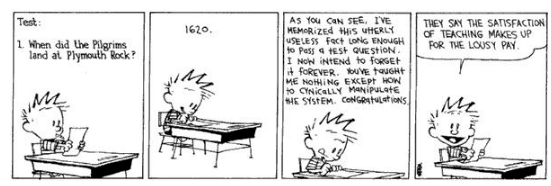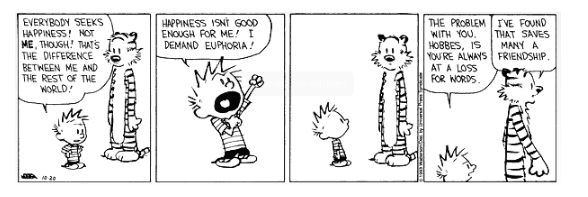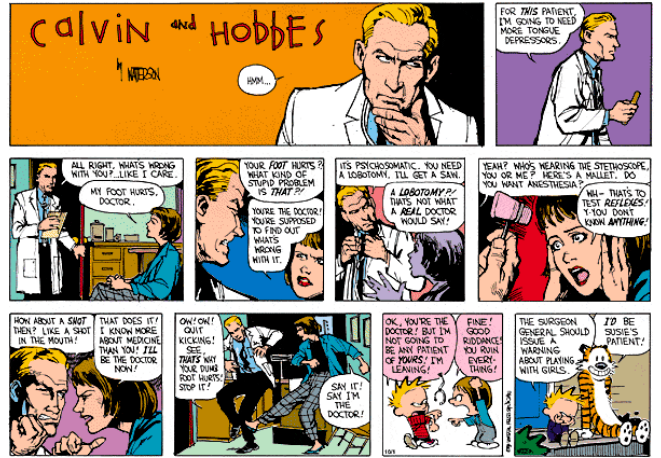ACTIVIDAD
1. OBSERVA EL VIDEO DE COMO CREAR UN BLOG PASO A PASO
2. EN CLASE DEBES CREAR UN BLOG PERSONAL EN GRUPOS DE A TRES PERSONAS
3.RECUERDA TENER CLARA LA INFORMACION PERSONAL CUANDO TE PIDA INGRESAR LOS DATOS
LICEO LA MILAGROSA SAN MATEO
BIENVENIDOS AL BLOG DE LENGUA CASTELLANA
jueves, 7 de julio de 2016
martes, 19 de mayo de 2015
tecnicas de investigacion GRADO ONCE
ESTUDIANTES EN ESTE LINK ENCONTRARAN ALGUNOS TIPS PARA LOS DIFERENTES MEDIO DE RECOLECCION DE INFORMACION SEGUN LOS PROYECTOS DE USTEDES
POR FAVOR CUALQUIER INQUIETUD ME AVISAN
http://recursos.udgvirtual.udg.mx/biblioteca/bitstream/20050101/1103/2/Metodos_y_tecnicas_de_investigacion_cuantitativa_y_cualitativa.swf
martes, 5 de mayo de 2015
the comics to english
DEFINITION
One of the best ways to learn a language is to fall in love with it, where studying the language becomes a joy in itself and not just a means to an end.
A great part about learning English is that there’s so much media out there for you to fall in love with to make learning the language fun. Comic strips, like Calvin and Hobbes, are a great way to learn a language because they are so visual. Seeing the expressions on the characters faces helps give meaning to the written word, and it also aids with memory. Plus, comics like these will give you a great insight into American culture.
Calvin and Hobbes is unquestionably one of the most popular comic strips of all time. (A comic strip is a series of drawings used to tell jokes.) It’s about the adventures of Calvin, a six-year-old with an overactive imagination, and Hobbes, his stuffed toy tiger.
To Calvin, Hobbes is a live tiger with human qualities, but all other characters see him as an inanimate stuffed toy.
Calvin is an extremely clever boy for his age, and the comic follows both him and Hobbes on his imaginative adventures throughout suburban American life.
The comic does not mention any specific names, but it explores and makes fun of many issues like environmentalism, public education, philosophy, and the defects of opinion polls.
So let’s get started learning English with Calvin and Hobbes!
The Comics
To help you understand each joke, there will be a small section above the comic that defines the words and phrases you may have trouble with, followed by a small commentary after the strip.
The definition of the words includes the panel (the section of the comic) the word or phrase is found in.
Words to Know
- Wanders (panel 1) — To walk slowly and casually.
- African plain (panel 1) — A plain is a large flat area of land.
- Ton (panel 2) — 2,000 pounds or about 900 kilograms.
- Deafening (panel 3) — A sound so loud that it will make you deaf.
- Shatter (panel 3) — To break violently into pieces.
Strips like these are what make Calvin and Hobbes so much better than other comics. Here, we explore Calvin imagining himself as an elephant innocently wandering through the African plains only to find out what he’s actually doing in the final panel: being a mischievous (i.e. someone who likes to cause trouble in a playful way) little boy, pulling a prank (i.e. a practical joke) on his parents.
Words to Know
- Who knows? (panel 2) — This is used to imply that you don’t know the answer to the question and don’t really care. For example: What are the characters’ names on the reality TV show Jersey Shore? —Who knows?
- Who cares? (panel 3) — You say who cares? when you want to imply that you don’t care at all, and you don’t think anyone else does either.
This panel begins to introduce the character Susie, who Calvin likes but tries to cover it up (cover it up means to hide) by always doing mean things and making fun of her. (You can see a full length cartoon with her at the end of the article.)
Words to Know
- Set fire (panel 1) — to intentionally put something on fire. You can also say to set something on fire or to light something on fire.
- She’s on to me (panel 4) — When someone is on to you they know what you’re thinking, they understand your intentions.
Here Calvin is asking absurd requests of his mom in order to make the question, “Can I have a cookie?” not seem so bad. However, this plan doesn’t work which leads Calvin to think “She’s on to me.”
Words to Know
- Utterly (panel 3) — completely.
- Cynically (panel 3) — doubtful as to whether something is worthwhile.
- Lousy (panel 4) — very bad.
Bill Watterson is criticizing the U.S.’s public education systems, saying how they only teach children to memorize useless information instead of teaching them anything useful, worthwhile, or practical.
Words to Know
- Words fail me (panel 4) — I’m speechless (without words), words can’t describe how I feel, I can’t think of anything to say.
- Keep in mind (panel 4) — Remember.
- Transmogrification (panel 4) — To transform into a different shape, especially something that is unusual or strange.
This strip introduces a long line of jokes as Calvin as a tiger.
Words to Know
- Go into shock (panel 1) — When blood pressure drops too low to get enough blood to your body. Symptoms include cold yet sweaty skin, weak and rapid pulse (how fast your heart beats).
- Scam (panel 2) — Fraud, a dishonest scheme
- Deadman’s float (panel 3) — When you float on your back in the water.
This panel is making fun of little suburban kids who are forced to take swimming lessons against their will and are irrationally (i.e. unreasonably) afraid of them.
Words to Know
- Trick question (panel 4) — Trick questions are when someone asks a question they already know the answer to in order to confuse someone. The question can have no correct answer or when the answer is no as simple as it seems.
For example, the initial response to What do you put into a toaster? is toast, which is incorrect. You put bread into a toaster and it turns into toast.
A great strip that just shows Calvin just being a kid. The mom has a normal reaction, “What are you doing?!” and Calvin thinks the answer is pretty obvious…
Words to Know
- A man of few words (panel 1) — Someone who is able to make a point without needing to use a lot of words. Someone who can describe things well. It’s usually used as a compliment.

Here you get a glimpse of Hobbes’ “smart-ass” (i.e. sarcastic) humor. Calvin says with dignity (as you can tell by the expression on his face), that he is “a man of few words,” which Hobbes makes it into meaning that Calvin doesn’t know many words and therefore isn’t very smart.
Words to Know
- Seeks (panel 1) — Is looking for.
- Euphoria (panel 2) — A feeling of intense excitement and happiness.
- At a loss for words (panel 4) — This means to have nothing to say, to be speechless.
- …Many a friendship (panel 4) — Hobbes is saying that his silence has prevented many people from disliking him.
Here, Calvin is making some absurd statements that Hobbes prefers to not to comment about. When Calvin makes fun of him for it, Hobbes implies if you don’t have anything nice to say, don’t say anything at all. This strip shows Hobbes as a man of few words.
Words to Know
- Fold (panel 4) — Fold is the word you say in poker when you want to quit on “the hand,” or throw your cards away and not bet anymore money on the round.
Notice Hobbes’ tail in the third panel.
Words to Know
- Patient (row 1, panel 2) — Someone who is waiting to see a doctor.
- Tongue depressor (row 1, panel 2) — A device used to examine the mouth and throat.
- Like I care (row 2, panel 1) — A sarcastic way to say that you don’t care at all.
- Find out (row 2, panel 2) — Issue a warning.
- Psychosomatic (row 2, panel 3) — A physical illness caused by mental problems.
- Lobotomy (row 2, panel 3) — A type of brain surgery, often used for mental patients.
- Saw (row 2, panel 3) — A big, knife-like tool used to cut down trees, among other things.
- Stethoscope (row 2, panel 3) — A medical tool used to listen to a heartbeat or breathing, it’s often worn around a doctor’s neck.
- Mallet (row 2, panel 4) — A hammer with a large wooden head.
- Anesthesia (row 2, panel 4)— A drug used to dull pain in medical procedures.
- Shot (row 3, panel 1) — To receive a vaccination through an injection.
- Shot in the mouth (row 3, panel 1) — A punch in the mouth.
Calvin and Hobbes include many brilliant strips like these showcasing the imaginative power of little kids (i.e. children). In the beginning of the strip, Calvin and Susie appear to be an adult doctor and his patient, respectively. But as the comic continues, you notice how childish/immature the adults are acting, only to find towards the end of the comic that the adults are actually Calvin and Susie playing Doctor.
Conclusion
Learning English should be fun. And we at Real Life English do our best to help you enjoy the learning process. If you want to read more Calvin and Hobbes, you can find his complete books on Amazon or look at the comics individually through a google search.
If you enjoyed this article, then sign up for our weekly newsletter to stay up-to-date with everything we do in the RealLIfe English community. Plus, you’ll get a free PDF report, the
jueves, 26 de marzo de 2015
IPLV TEMATICA Y PLAN DE MEJORAMIENTO (I.PER) 2015
INSTITUCION PEDAGOGICA LAURA
VICUÑA 2015
TEMATICA Y PLAN DE MEJORAMIENTO
PRIMER PERIODO GRADO SEXTO
Durante el periodo las diferentes
tareas a realizar son mapas mentales de información sobre la temática de
presente simple, preguntas wh y demostrativos; ejercicios prácticos de la guía y
ejercicios en diferentes materiales. Practice: listening, writing and speaking at class.
PLAN DE MEJORAMIENTO
1. REALIZA
UN MAPA MENTAL EN UNA CARTELERA EXPLICANDO LA TEMATICA VISTA DURANTE EL PERIODO
EN INGLES
2. EN
UNA LOTERIA(3 CARTONES) REALIZA VERBOS IRREGULARES Y CON ESOS VERBOS REALIZA
ORACIONES EN PRESENTE SIMPLE (AFIRMATIVA, NEGATIVA E INTERROGATIVA) EN UNA HOJA
EXAMEN
3. REALIZA
UN FRISO CON LOS DEMOSTRATIVOS VISTOS EN CLASE Y 8 ORACIONES POR CADA UNO
4. CUADERNO
AL DIA EN LAS DIFERENTES TEMATICAS Y GUIA TERMINADA CORRECTAMENTE SOLUCIONADA
5. SUSTENTACION
ORAL EN INGLES
TEMATICA Y PLAN DE MEJORAMIENTO
PRIMER PERIODO GRADO SEPTIMO
Durante el periodo las diferentes
tareas a realizar son mapas mentales de información sobre la temática de
presente continuo, can y can not, pasado simple y verbos irregulares y
regulares; ejercicios prácticos de la guía y ejercicios en diferentes materiales.
Practice: listening, writing and
speaking at class.
PLAN DE MEJORAMIENTO
1. REALIZA
UN MAPA MENTAL EN UNA CARTELERA EXPLICANDO LA TEMATICA VISTA DURANTE EL PERIODO
EN INGLES
2. EN
UN JUEGO DE ESCALERA REALIZA VERBOS IRREGULARES Y CON ESOS VERBOS REALIZA
ORACIONES EN PRESENTE SIMPLE (AFIRMATIVA, NEGATIVA E INTERROGATIVA) EN UNA HOJA
EXAMEN
3. REALIZA
UN FRISO CON EL PRESENTE PROGRESIVO EN SUS TRES FORMAS (AFIRMATIVA, NEGATIVA Y
PREGUNTA) 6 ORACIONES POR CADA UNO
4. REALIZA
UN COLLAGE CON EL CAN Y CAN NOT CON INFORMACION PERSONAL Y EN HOJA EXAMEN
REALIZA CON ESA MISMA INFORMACION ORACIONES USANDO EL VERBO MODAL
5. CUADERNO
AL DIA EN LAS DIFERENTES TEMATICAS Y GUIA TERMINADA CORRECTAMENTE SOLUCIONADA
6. SUSTENTACION
ORAL EN INGLES
TEMATICA Y PLAN DE MEJORAMIENTO PRIMER PERIODO GRADO OCTAVO
Durante el periodo las diferentes
tareas a realizar son mapas mentales de información sobre la temática de adjetivos
comparativos y superltivos, formas imperativas, presente simple y verbos
irregulares y regulares; ejercicios prácticos de la guía y ejercicios en
diferentes materiales. Practice: listening, writing and speaking at class.
PLAN DE MEJORAMIENTO
1. REALIZA
UN MAPA MENTAL EN UNA CARTELERA EXPLICANDO LA TEMATICA VISTA DURANTE EL PERIODO
EN INGLES
2. EN
UNA PARQUES REALIZA ADJETIVOS EN COMPARATIVOS Y SUPERLATIVOS 12 POR CADA UNO
FORMA CORTA Y CON ESOS ADJETIVOS REALIZA ORACIONES CON LA FORMA LARGA EN UNA
HOJA EXAMEN
3. REALIZA
UN FRISO CON LOS ADJETIVOS VISTOS EN CLASE Y EN LA GUIA Y 8 ORACIONES POR CADA
UNO
4. CUADERNO
AL DIA EN LAS DIFERENTES TEMATICAS Y GUIA TERMINADA CORRECTAMENTE SOLUCIONADA
5. REALIZA
UN CRUCIGRAMA CON LAS FORMAS IMPERATIVAS CON PISTAS EN DIBUJOS
6. SUSTENTACION
ORAL EN INGLES
TEMATICA Y PLAN DE MEJORAMIENTO PRIMER PERIODO GRADO NOVENO
Durante el periodo las diferentes
tareas a realizar son mapas mentales de información sobre la temática de Modal
Verbs (must, musn´t don´t have to, can´t, want to, need to Would like) (reading
comprehension), Adjective and prefixe ( definition and use) Going to vs will
(text creation) ; ejercicios prácticos de la guía y ejercicios en diferentes materiales.
Practice: listening, writing and speaking at class.
PLAN DE
MEJORAMIENTO
1. REALIZA
UN MAPA MENTAL EN UNA CARTELERA EXPLICANDO LA TEMATICA VISTA DURANTE EL PERIODO
EN INGLES
2. EN
UN CONCENTRESE REALIZA PREFIJOS Y SUFIJOS (12) POR CADA UNO Y CON ESOS REALIZA ORACIONES EN UNA HOJA EXAMEN
3. REALIZA
UN FRISO CON LOS VERBOS MODALES VISTOS EN CLASE Y EN LA GUIA Y 8 ORACIONES POR
CADA UNO
4. REALIZA
UN TEXTO DESCRIPTIVO EN INGLES DONDE USES LAS TECNICAS DE LOS PARRAFOS QUE SE
TRABAJARON EN CLASE DE LAS 3 FORMAS (ORGANIZACIÓN EN PREGUNTA WH, ORGANIZACIÓN POR
PARRAFO CON LA PREGUNTA, ORGANIZACIÓN TEXTUAL CON CONECTORES Y TRADUCCION A
ESPAÑOL A INGLES) EN UNA HOJA EXAMEN
5. CUADERNO
AL DIA EN LAS DIFERENTES TEMATICAS Y GUIA TERMINADA CORRECTAMENTE SOLUCIONADA
6. SUSTENTACION
ORAL EN INGLES
TEMATICA Y PLAN DE MEJORAMIENTO PRIMER PERIODO GRADO DECIMO
Durante
el periodo las diferentes tareas a realizar son mapas mentales de información sobre
la temática de Past simple (regular and
irregular verbs), Past simple vs past
continuous (finished and interrupted actions), Present perfect (already, yet), Past simple vs present perfect.
(finished and continuously actions from the past to the present); ejercicios prácticos
de la guía y ejercicios en diferentes materiales. Practice: listening, writing and speaking at class.
PLAN DE MEJORAMIENTO
1. REALIZA
UN MAPA MENTAL EN UNA CARTELERA EXPLICANDO LA TEMATICA VISTA DURANTE EL PERIODO
EN INGLES
2. EN
UNA ESCALERA REALIZA VERBOS IRREGULARES EN PRESENTE, PASADO Y PASADO PARTICIPIO
(12) POR CADA UNO Y CON ESOS REALIZA ORACIONES EN UNA HOJA EXAMEN
3. REALIZA
UN FRISO CON EL PASADO SIMPLE VS PASADO CONTINUO 8 ORACIONES POR CADA UNO EN
SUS TRES FORMAS (AFIRMATIVO, NEGATIVO, E INTERROGATIVO)
4. REALIZA
UN TEXTO DESCRIPTIVO EN INGLES DONDE USES LAS TECNICAS QUE SE TRABAJARON EN
CLASE CON EL PRESENTE PERFECTO EN UNA HOJA EXAMEN
5. REALIZA
UN MOVIL CON VOCABULARIO TRABAJADO EN EL PERIODO COMO EXPRESIONES Y TRABAJOS
CON SU RESPECTIVO DIBUJO
6. CUADERNO
AL DIA EN LAS DIFERENTES TEMATICAS Y GUIA TERMINADA CORRECTAMENTE SOLUCIONADA
7. SUSTENTACION
ORAL EN INGLES
TEMATICA Y PLAN DE MEJORAMIENTO PRIMER PERIODO GRADO ONCE
Durante
el periodo las diferentes tareas a realizar son mapas mentales de información sobre
la temática de Zero conditional and first conditional (order of clauses),
second conditional (would),
Past simple and past continuous (could,
was/were able to, managed to), Past
perfect (participle and past of verb have) Narrative tense (written and spoken
production); ejercicios prácticos de la guía y ejercicios en diferentes materiales.
Practice: listening, writing and speaking at class.
PLAN DE MEJORAMIENTO
1. REALIZA
UN MAPA MENTAL EN UNA CARTELERA EXPLICANDO LA TEMATICA VISTA DURANTE EL PERIODO
EN INGLES
2. EN
UNA ESCALERA REALIZA VERBOS IRREGULARES EN PRESENTE, PASADO Y PASADO PARTICIPIO
(12) POR CADA UNO Y CON ESOS REALIZA ORACIONES EN UNA HOJA EXAMEN
3. REALIZA
20 ORACIONES CON EL CONDICIONAL CERO Y UNO POR CADA UNO CON SU RESPECTIVA
TRADUCCION
4. REALIZA
UN TEXTO DESCRIPTIVO EN INGLES DONDE USES LAS TECNICAS DE LOS PARRAFOS QUE SE
TRABAJARON EN CLASE DE LAS 3 FORMAS (ORGANIZACIÓN EN PREGUNTA WH, ORGANIZACIÓN POR
PARRAFO CON LA PREGUNTA, ORGANIZACIÓN TEXTUAL CON CONECTORES Y PALABRAS DE
ENLACE; TRADUCCION A ESPAÑOL A INGLES) EN UNA HOJA EXAMEN
5. REALIZA
UN MOVIL CON VOCABULARIO TRABAJADO EN EL PERIODO COMO (could, was/were able to,
managed to) CON SU RESPECTIVO DIBUJO
6. CUADERNO
AL DIA EN LAS DIFERENTES TEMATICAS Y GUIA TERMINADA CORRECTAMENTE SOLUCIONADA
7. SUSTENTACION
ORAL EN INGLES
Suscribirse a:
Entradas (Atom)









